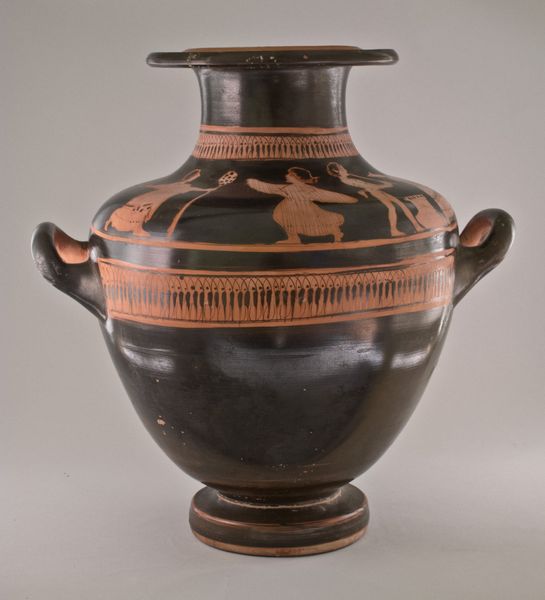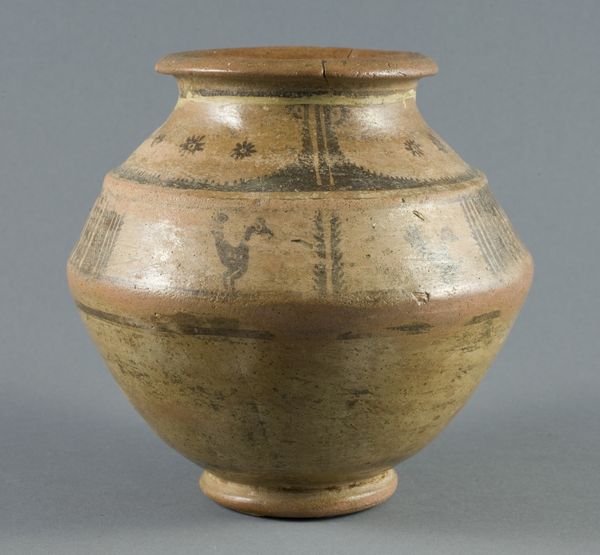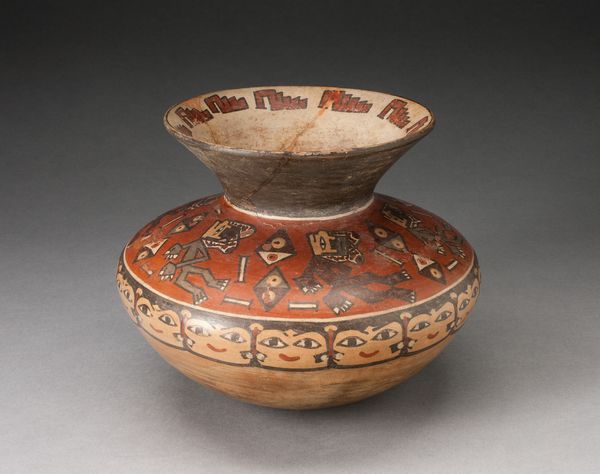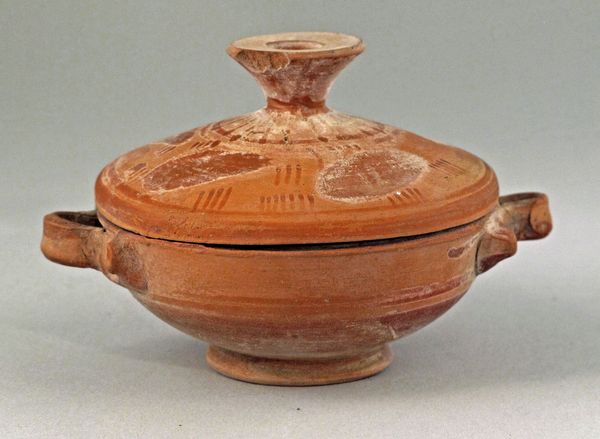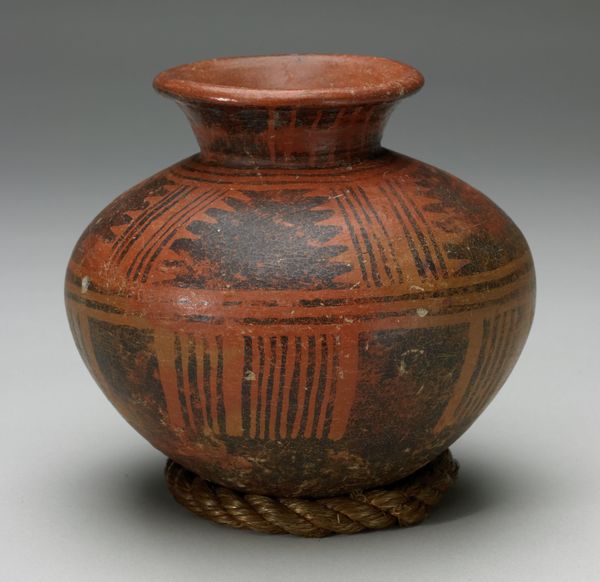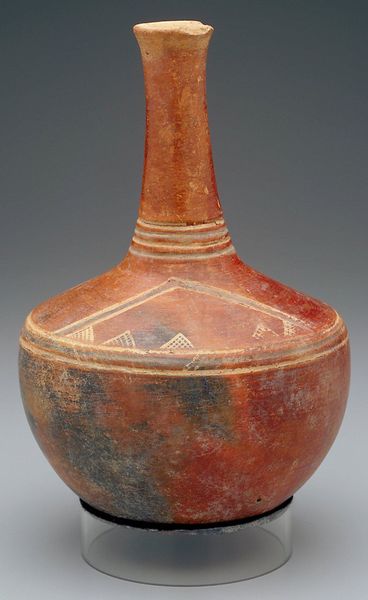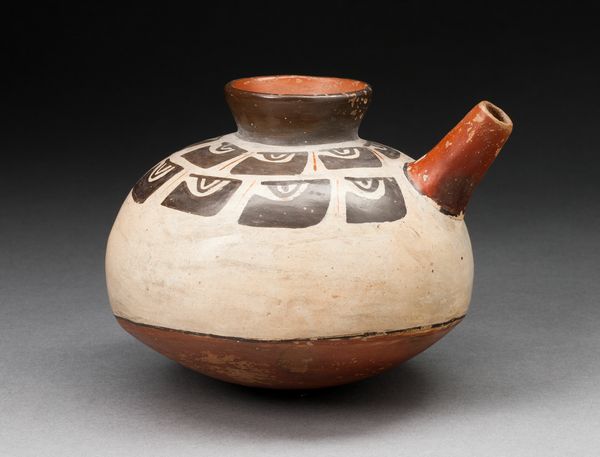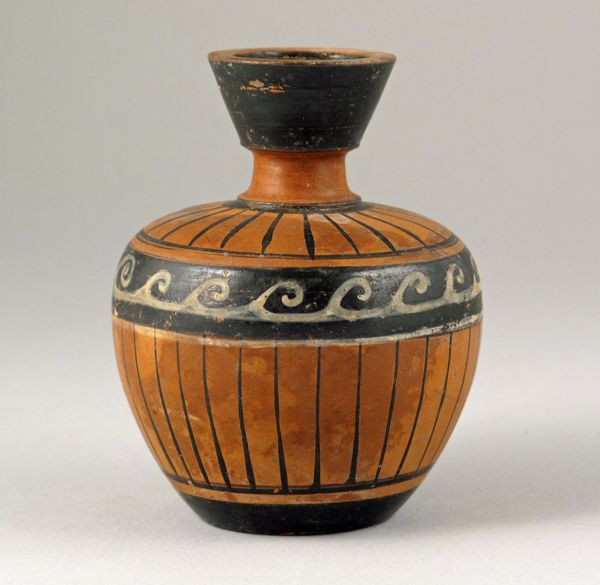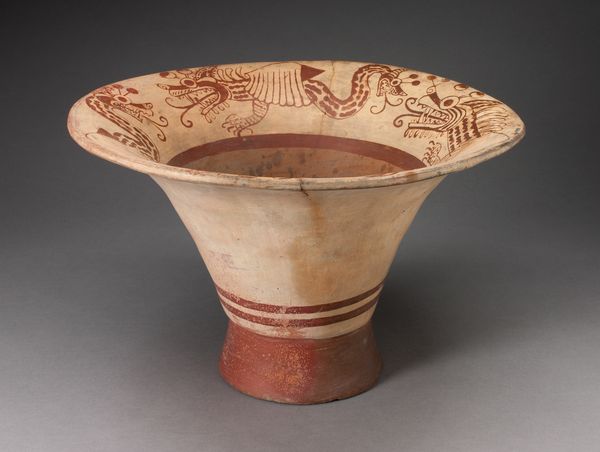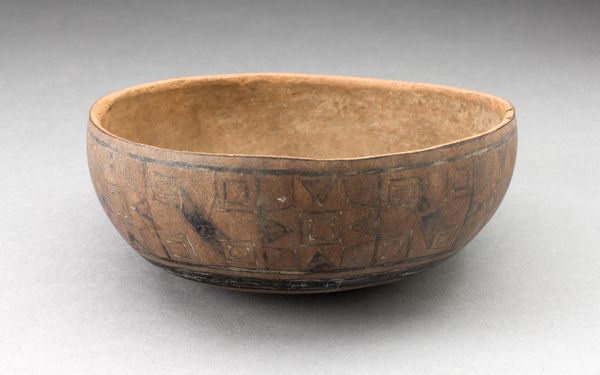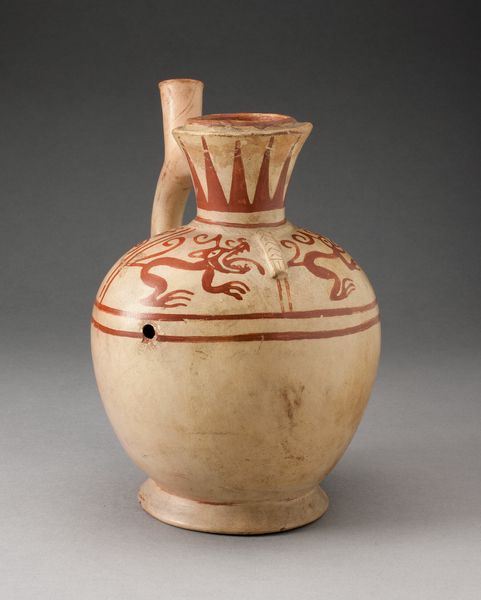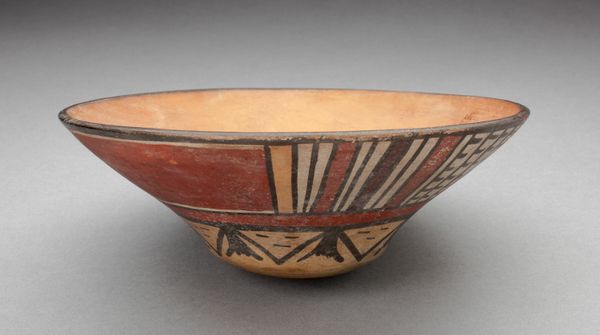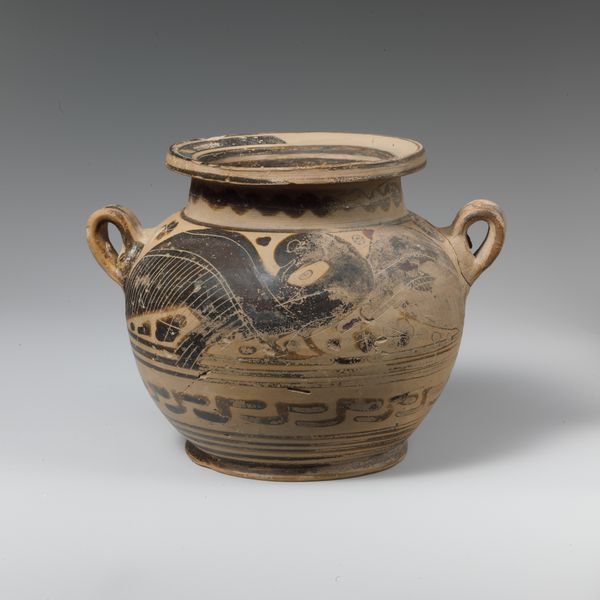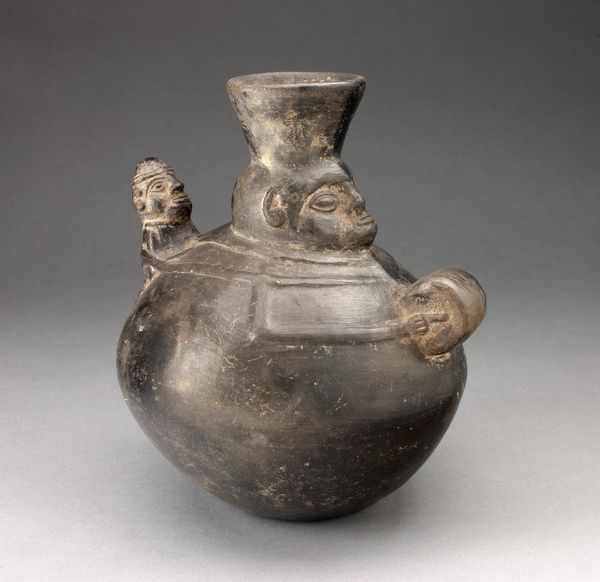
ceramic
#
greek-and-roman-art
#
ceramic
#
figuration
#
ancient-mediterranean
#
ceramic
Copyright: Public domain
Editor: We're looking at a Lekanis with Satyrs on the Lid from 350 BC. It’s ceramic and resides at LACMA. The figures are fascinating, and the red and black create such a distinctive and aged visual. What catches your eye when you see this piece? Curator: What strikes me is how playfully the artist has depicted the satyrs. I feel this immediate kinship – a cheeky glance across millennia. Ancient Greek pottery is just bursting with stories, often told with a healthy dose of humor. See how the artist uses the curves of the ceramic to enhance the sense of movement. What do you make of that use of line, so crucial to this art form? Editor: I like the vertical lines under the figures; they're so simple but add a feeling of dynamism, like energy radiating upwards. Do you think the choice of ceramic affects how we view the scenes painted on it? Curator: Absolutely! Ceramic was the plastic of its day. Utilitarian, but also incredibly adaptable for artistic expression. It has an earthiness. Imagine holding this object. It connects you, not only to the scene depicted but to the hands that shaped it, painted it. What secrets do you think it held when it was new? Editor: I hadn't thought about its tactile qualities. It’s really like time travel, isn’t it? Thank you, that’s a wonderful perspective! Curator: It’s a shared journey, exploring these remnants. What resonates most with me is how relatable these ancient expressions of life can still be. Art endures; that’s the magic.
Comments
No comments
Be the first to comment and join the conversation on the ultimate creative platform.
